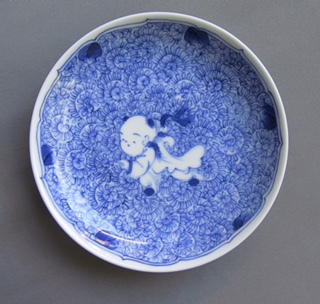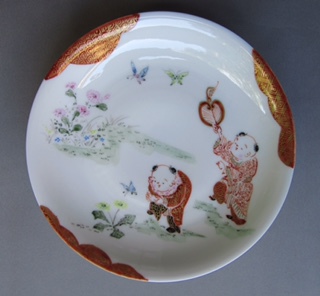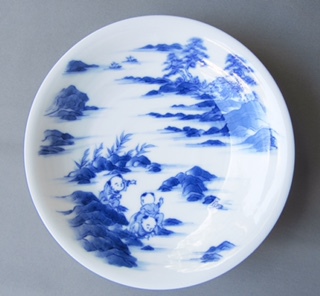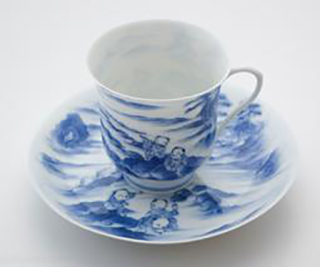唐子(からこ)




幸せを呼ぶほほえみ
三川内の御留柄 : 平戸藩ご用達の指定図柄
唐子は、文字通り、中国の子どもを指す言葉です。唐服をまとい、「唐子髷(からこまげ)」を結った姿であらわされます。
日本人が中国文化に抱いた憧憬と異国に馳せた思いをあらわす図柄です。平戸焼の唐子絵は、三川内以外では描かれることが許されず、その独自の意匠の決まり事に従って、白磁に描かれました。
地理的に東アジアに近い長崎県は、紀元前の昔から中国大陸や朝鮮半島と深い関わりをもってきました。唐子絵は、唐時代の中国から磁器を飾るようになり、江戸時代に日本に入りました。
その後も、日本における中国文化に対する憧憬は連綿と続いてきました。唐子は縁起のよい図柄として、現代でも、絵画や茶道具をはじめ、美術工芸品のあちこちに唐子の姿を見ることができます。
三川内焼を代表する「献上唐子」は、松の木の下で蝶と戯れる図案です。唐子が七人の図案は朝廷と将軍家、五人のものは大名とその重臣、三人のものは武士、庶民が使うことは許されていませんでした。
現代絵師、平戸五光窯・藤本江里子の描く唐子は、まるで妖精が子供に姿を変えたようです。その無邪気に遊んでいる姿は自然の生命そのものであり、唐子のほほえみは魔法のように、私達の心に幸せを呼び起こします。
Karako




Charming Smiles Bringing Happiness
In old times, Hirado ware reserved the proprietary right for the design and Hirado-style Karako-e wasn’t painted outside Mikawachi as it was prohibited. Literal translation of karako is Chinese children and it is an auspicious design for the Japanese. The karako-e that decorated Hirado ware at that time was painted on porcelain according to rules of its specific style. Traditional Hirado karako-e painted children playing under a pine tree, and number of children represented which class in society used the ware.
Nowadays, however, we can see karakos on ceramic wares produced all over Japan and karako is probably one of the most popular designs painted on Japanese ceramics. Fujimoto Eriko, the designer and painter of Hirado Tousyo, talks about how she sees karakos when she paints them, and it might give us a clue to understand why it is still popular and widely accepted among the Japanese. She says she doesn’t see karakos are simply Chinese children; she paints them as spirits or fairies living in nature. The Japanese may see some unexplainable charm in karakos. As Eriko says, karakos are probably seen as imaginary lives living in nature in the form of playing children who bring happiness to us. Simply watching smiling karakos will definitely make you feel happy in any case. Being free from the restriction of traditional styles, karako-e now diversifies its designs but still decorates Japanese ceramics with unchanged charming smiles.

